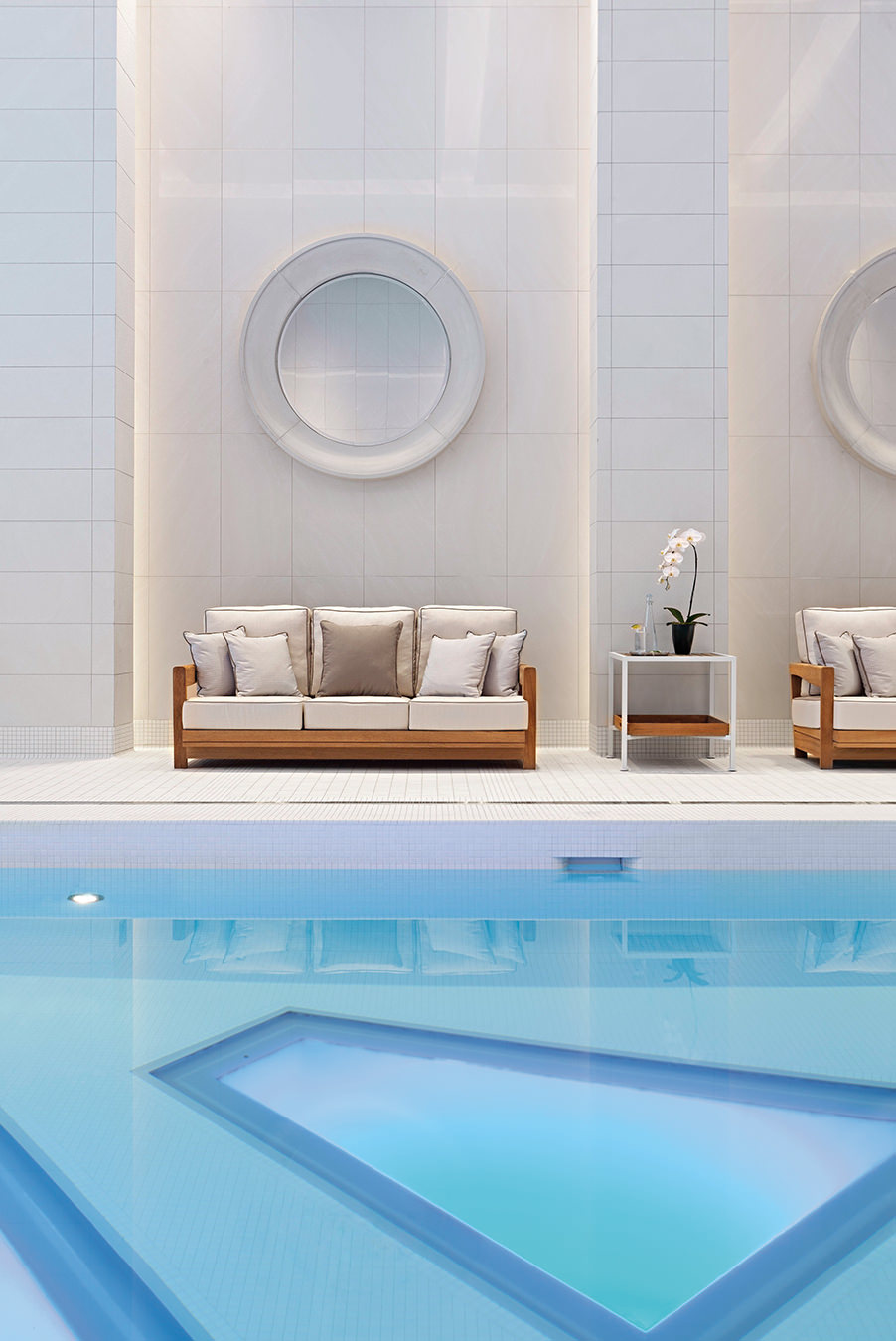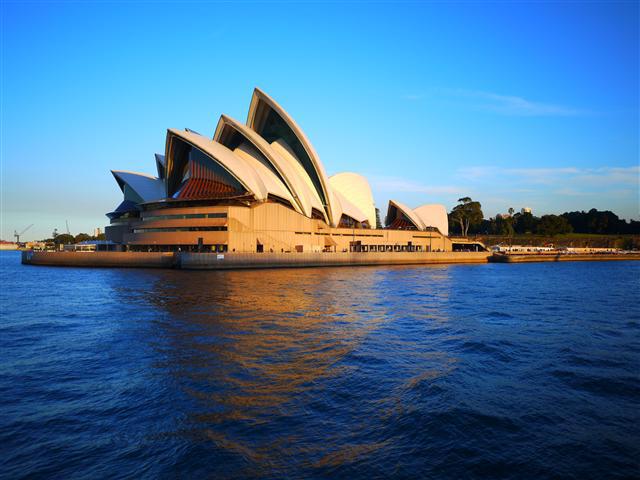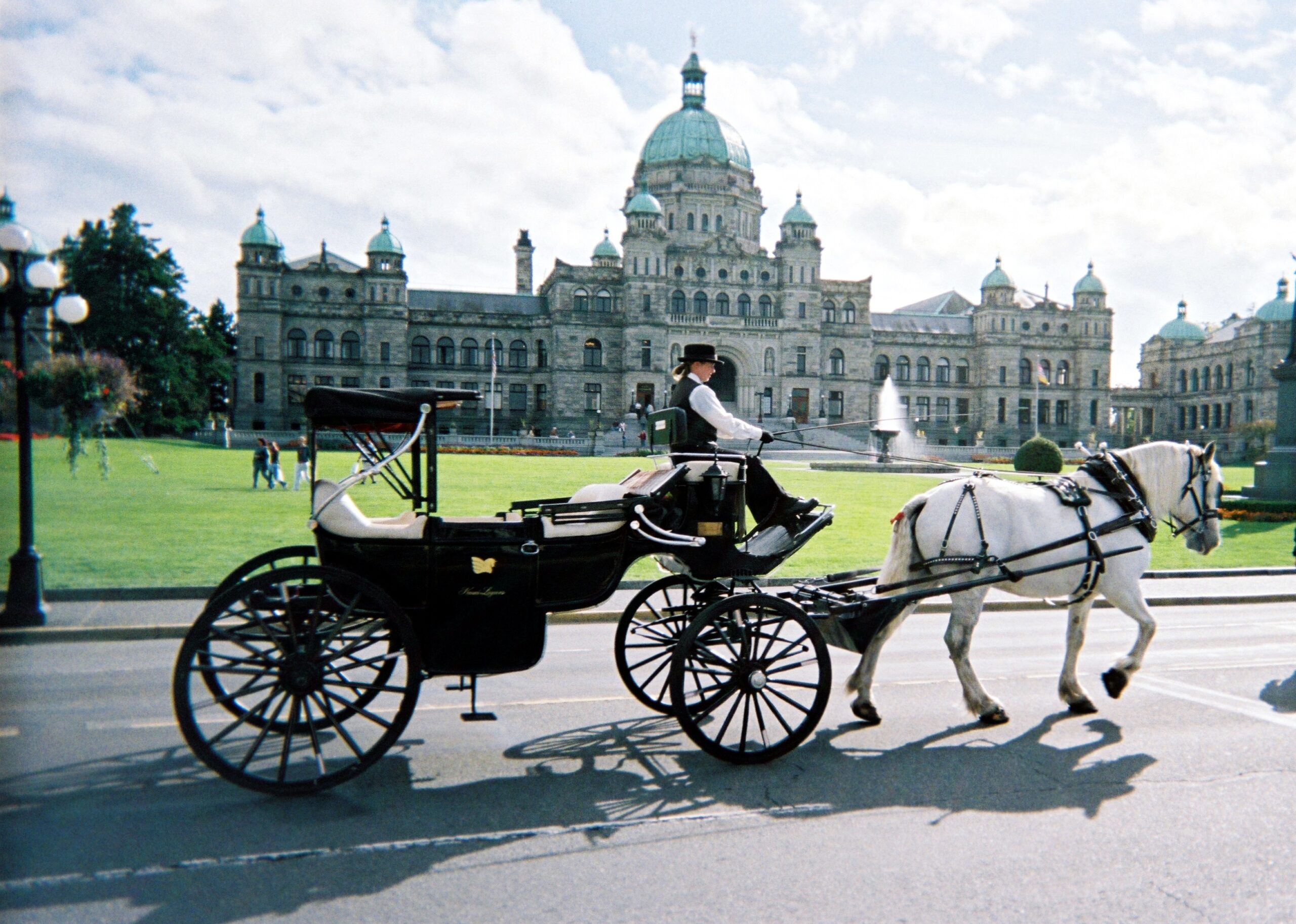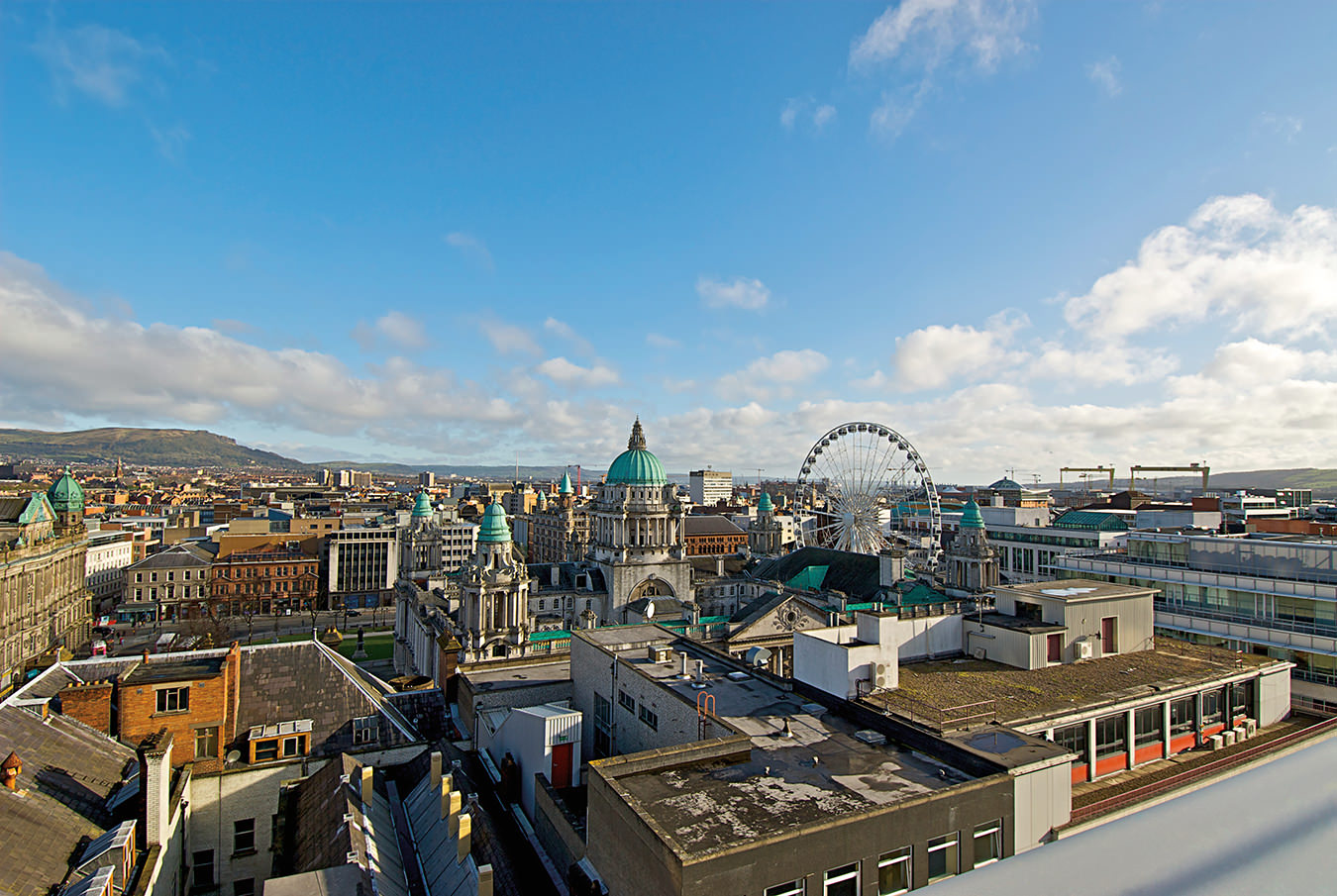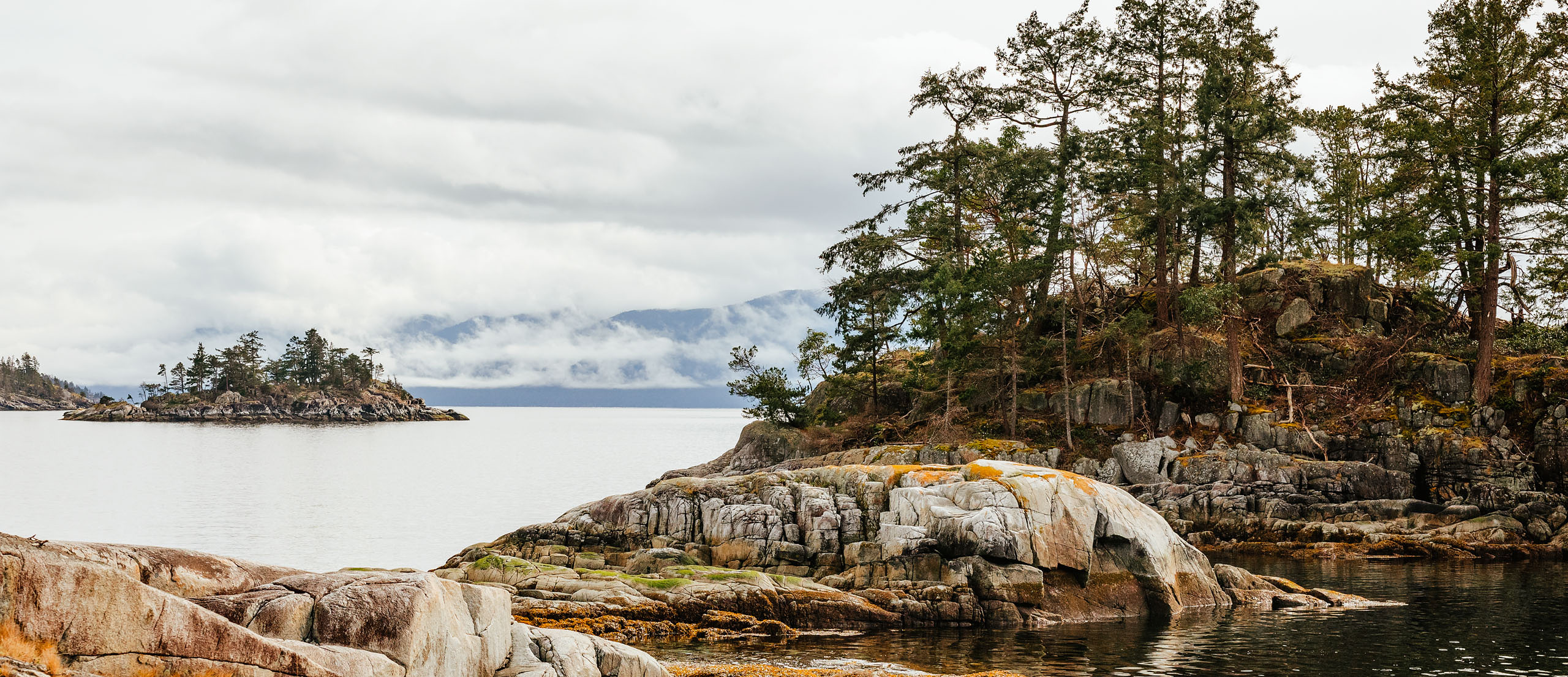
Oyster Island Retreat on British Columbia’s Sunshine Coast
Escape to a private island.
Northwest of Vancouver, accessible only by sea or air, the Sunshine Coast is separated from the urban centres of British Columbia by Howe Sound, the southernmost fjord in North America. Between the continent and the sea are old mining and logging towns that are now sleepy communities of artists, Indigenous groups, and others who prefer the slower lifestyle of the coast to that of the city. Legendary hiking trails make for beautiful bushwalks, old-growth groves bask in moss and silence, and wellness retreats speckle the coastline, attracting people from all over the world.
Sprinkled in the coves and inlets, multiple islands feature varying levels of development, from small corrugated huts with boat docks to massive timber-built estates. Oyster Island is one such isle. At 12 acres, it’s one of the smallest inhabited islands in the region, and it has seen various stages of development. First settled by a mysterious man named Edward E. Laks in the 20th century, the island is now owned by Asaph and Hemsa Fipke. The Fipkes bought it to get away from the city with family and friends while also harbouring dreams of seeing the private island host artists, writers, healers, and activists, following the model of incubator cum destination. The couple is extremely conscious of the delicacy of the land, wanting to make sure any future use remains gentle on the grassy granite outcrops, the towering cedars, and the quirky beauty of the arbutus trees that grow hesitantly along the shore.
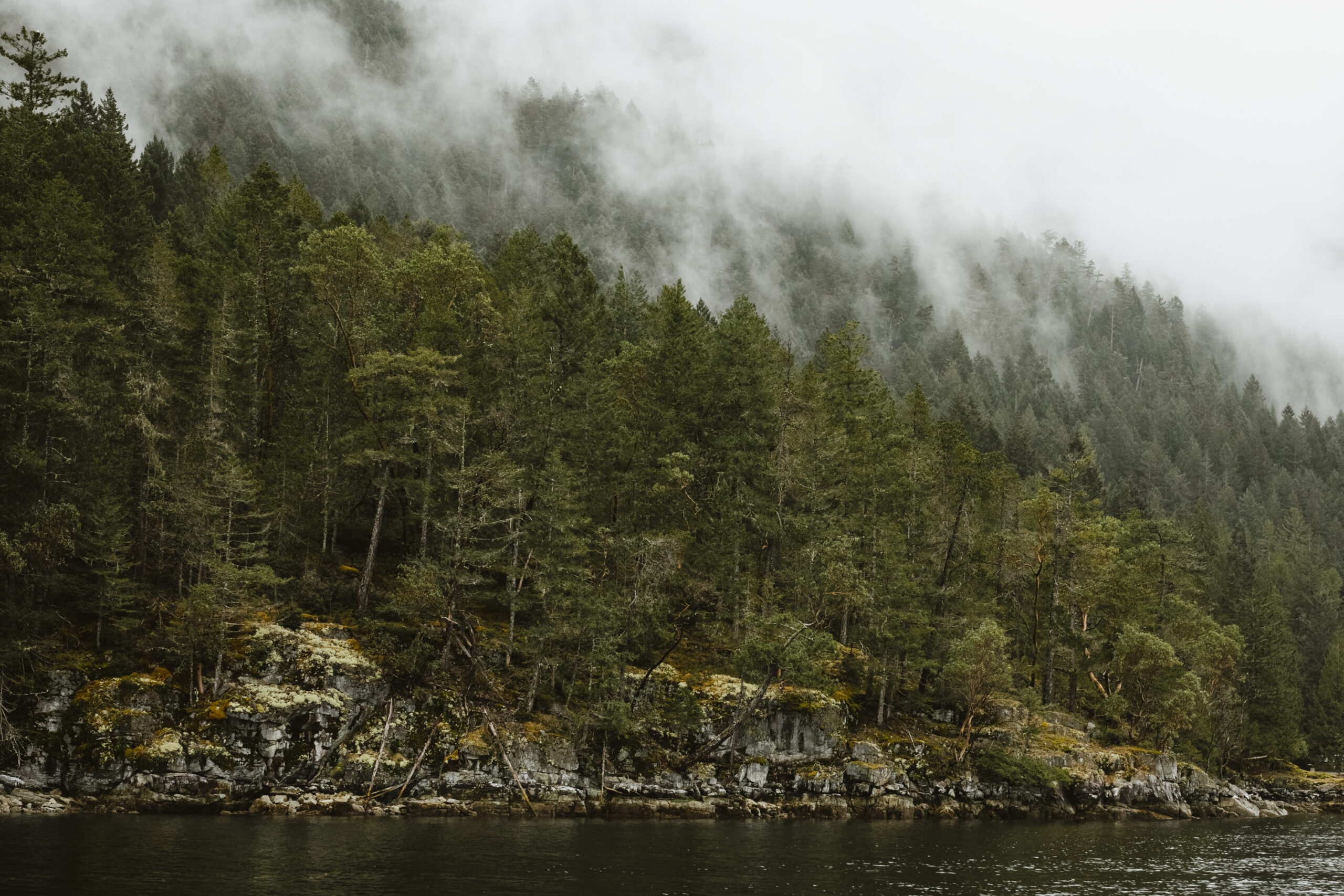
The foggy shore of the Sunshine Coast on approach to Oyster Island.
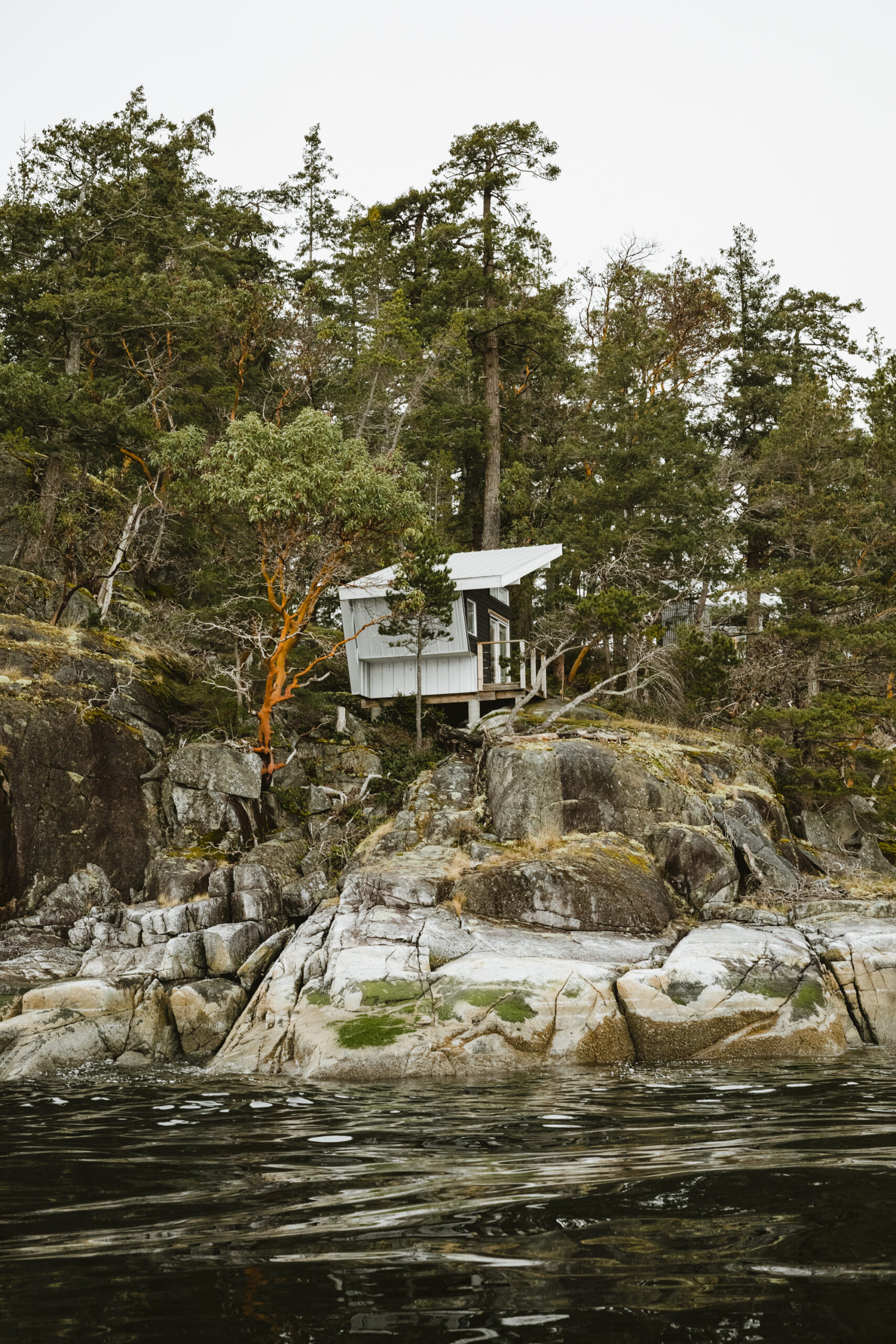
The first sights of Oyster Island. One of the three “bunkies” on the island, where you sleep in view of the water and trees.
Oyster Island Retreat’s main house is a modern dwelling with a slanted, cantilevered roof to withstand the wind and rain with two bedrooms and another bunk room. Three smaller structures emulate the corrugated metal and black of the main house in a style that might be described as survivalist chic. Each of these “bunkies” has one bed with windows facing out over the water for a more private sleeping experience. The number of beds, coupled with the capacity of the well water, mean that only 12 people can stay on the island at any one time. Connected by recently updated gravel roads are a boat launch, a shed with living quarters for staff, space for equipment, and a wooden helipad that doubles as a massive deck.
Getting to Oyster from Vancouver requires a helicopter or float plane, a boat charter cruising up the Sunshine Coast, or for something rugged and scene-setting, a ferry followed by a drive to Egmont and water taxi.
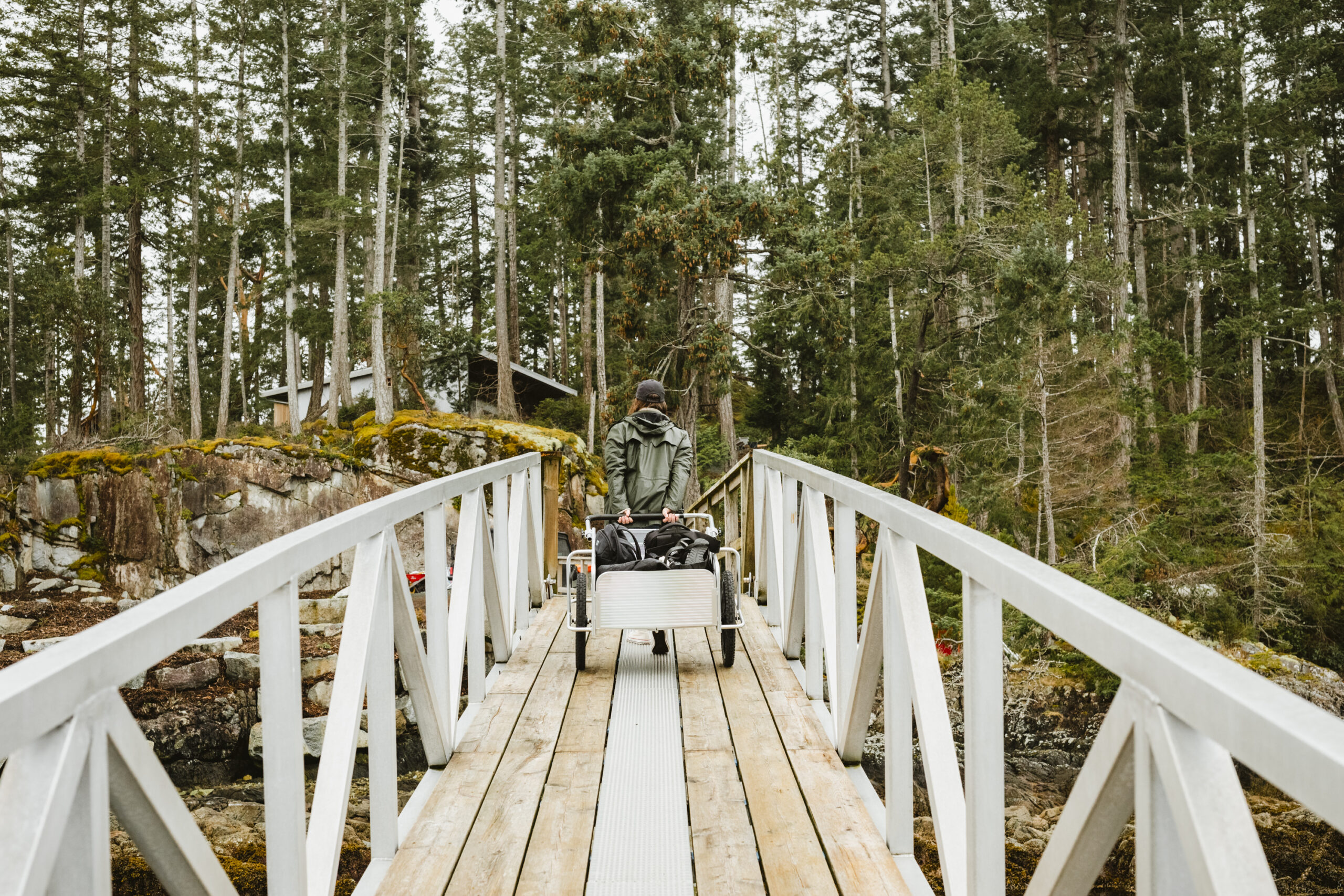
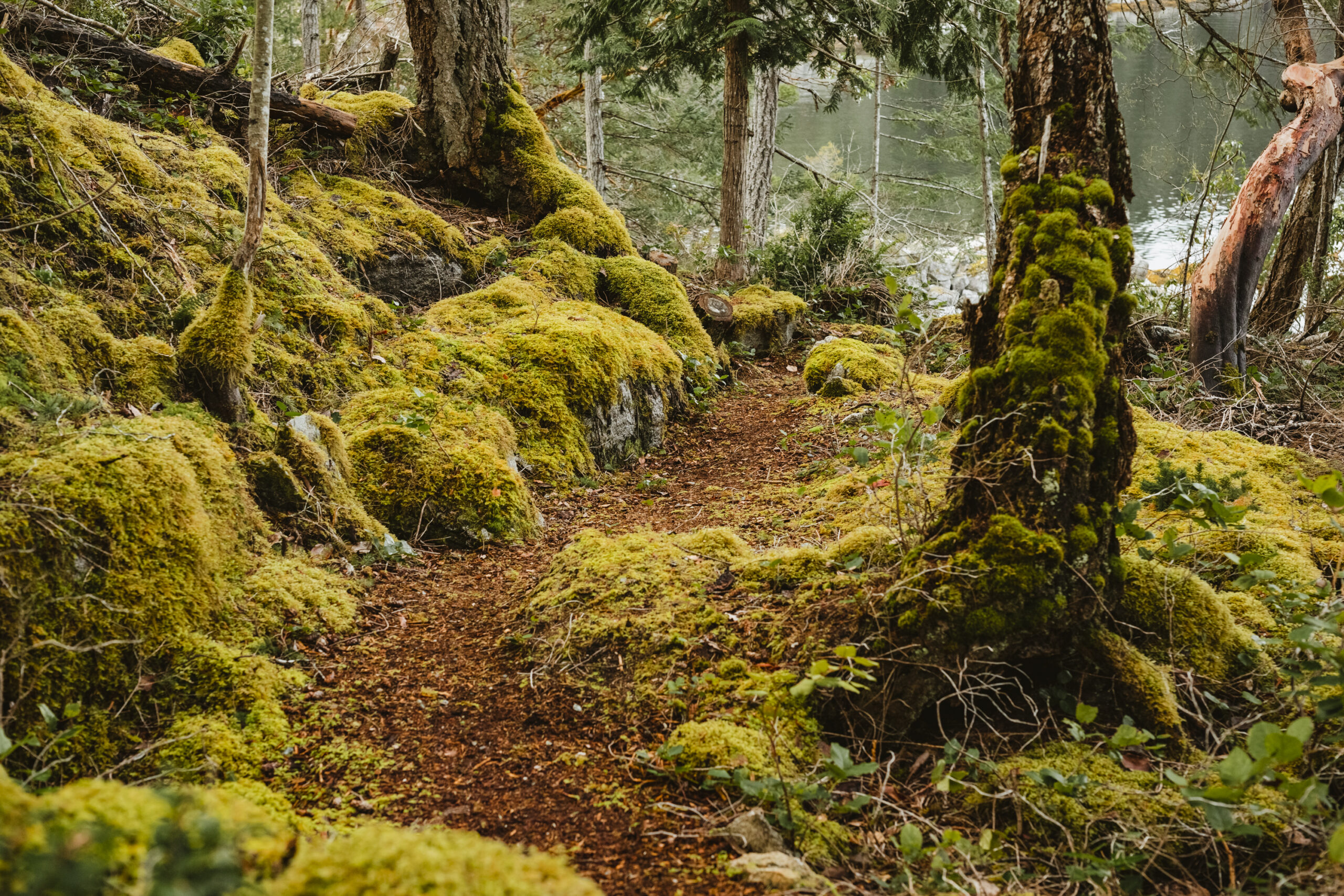
“Oyster is a rugged sanctuary. There is nothing more gratifying than the feeling you get on arriving at its shores,” Asaph says over the phone from his home in West Vancouver. During the approach, the wind rinses the eyes of the city so they can rest soft on the natural world. As the late spring yawns in the morning, and fog rolls over the mountains like enveloping scarves, a vibrant spectrum of colour descends from the white-capped mountains down to the lichen-covered rocks at the grey-blue water’s edge.
The sea teems with life—a pod of orca make a pass the same time every year. And human traditions abound as well. Every year an exuberant resident in Blind Bay, a neighbouring cove, has a party. “There’s a tradition of cruising on paddleboards or your small tender boats around Blind Bay, saying hello to the different neighbours,” Asaph says about the area in the summertime.

A bunkie at noon.
Art, architecture, and a way of life formed around the appreciation of both thrive here. These islands can become expressions, like canvases, upon which the owners can build a particular sense of community. There are plans for adding more amenities like a hot tub to complement the paddleboards and jet skis, but at the same time the Fipkes are doing everything they can to replant the areas of the island that were developed previously, keeping that harmony between lifestyle activities and preservation high on the priority list.
A hike to the top of Edward’s Point, to where a memorial to the pioneer stands, makes for views that stretch toward the gold and pink sunset at the edge of the world. On the walk back to the main house, Enoch, an Indigenous woodworker who had come up to work on the buildings and ready them for the coming summer season, stops to chat for a bit. Matt Friesen is caretaker of Oyster Island, managing it with his partner, Andrea McLarty. While everything is provided for, the caretakers’ approach is hands-off, making sure everything runs smoothly without being too fussy, preserving the wilderness-trip feeling of being among the evergreens and orcas.
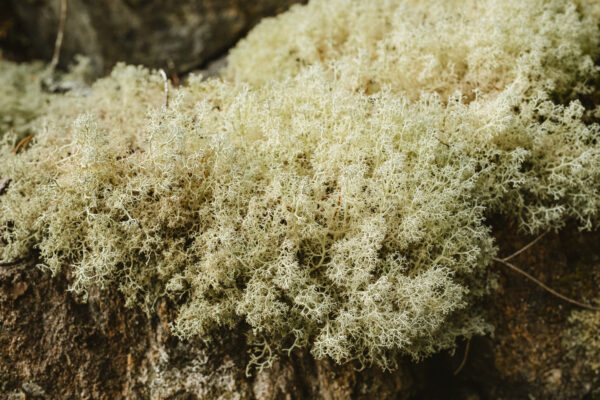
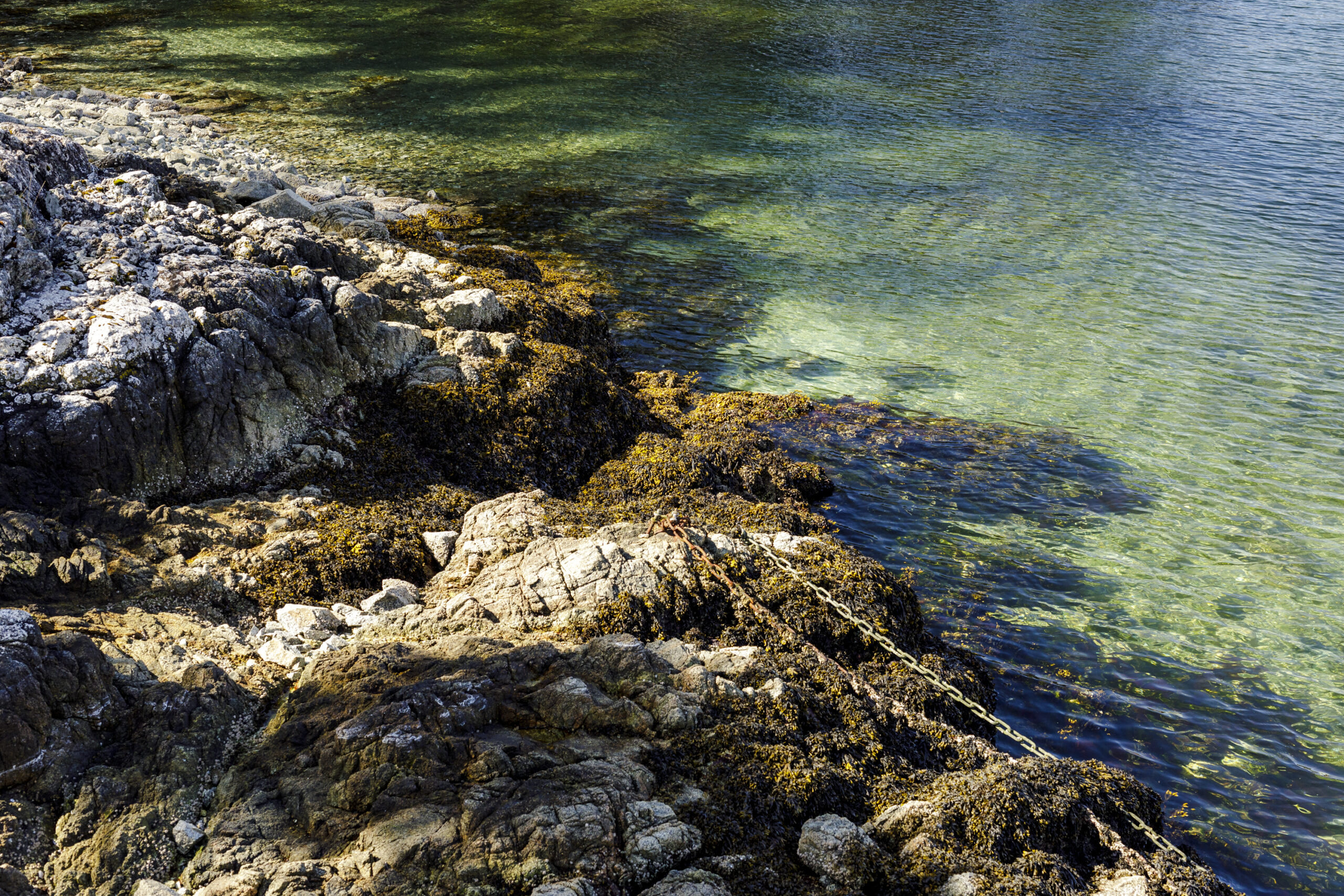
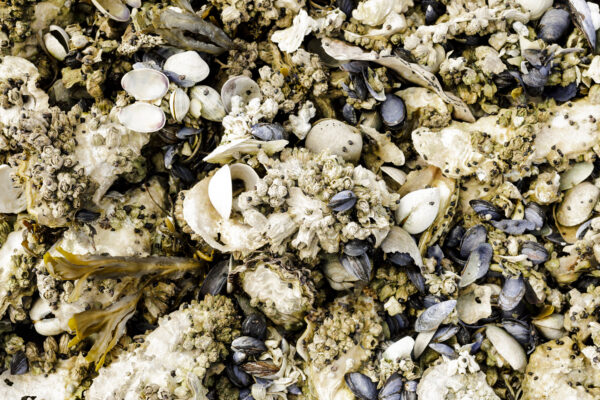
While the island is not open for anyone, which may draw the ire of some, the model of word-of-mouth, and application-based stays may be the future of such locations; as private, remote spots become more desirable, stewardship of the land must be maintained. The beauty of Oyster Island and the Sunshine Coast in general is a sensitive one, where rare trees grow resiliently and art thrives. With the world slowed down during the pandemic, it is possible to see, by looking closely, the sensitivity that we may previously have missed while zooming across the globe. Time on Oyster Island is deep time, and as we sit out by the fire at the end of the night, bellies full, telling stories, problems fade away.
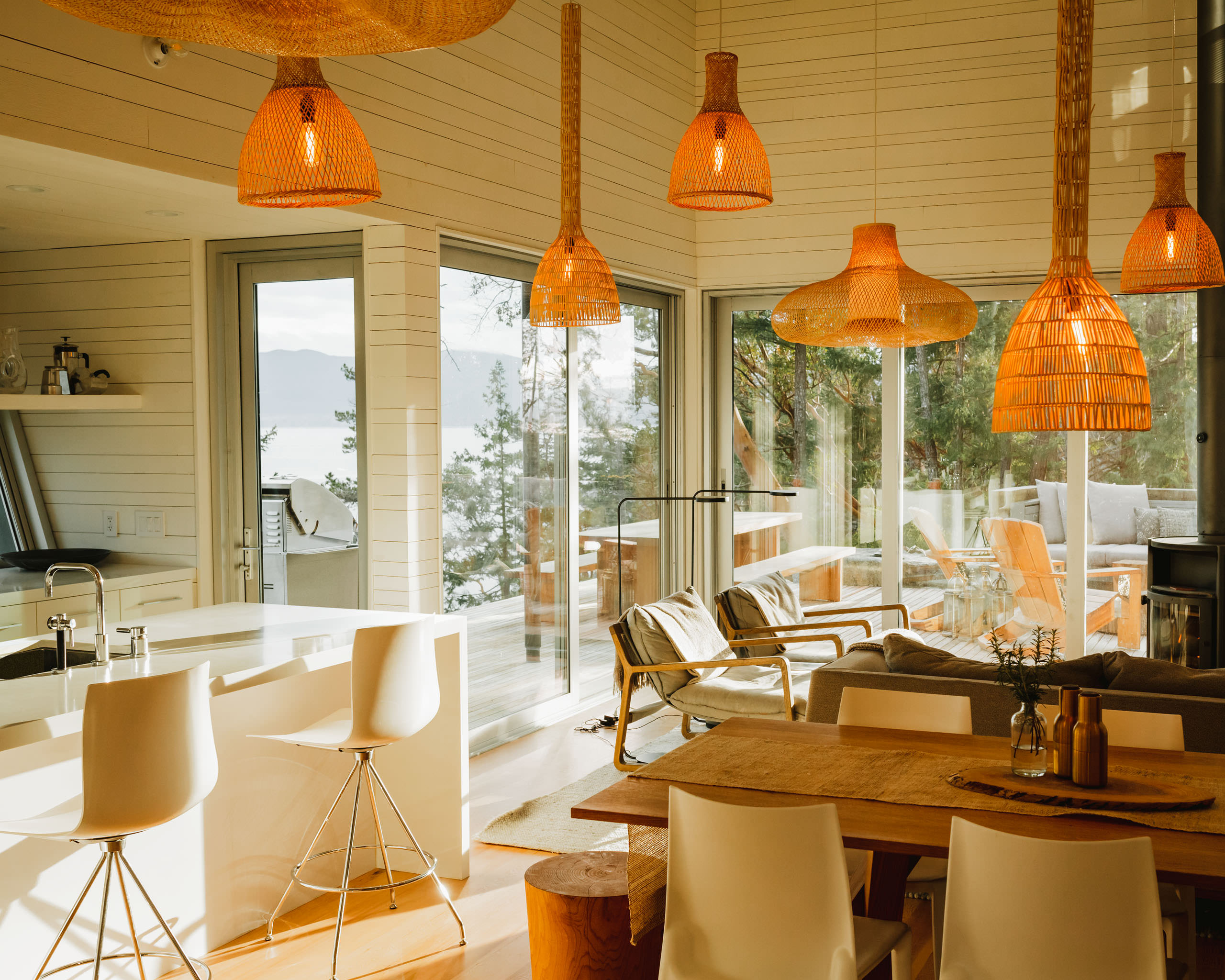
The interior of the main house offers a highly-designed setting amongst the natural environment.
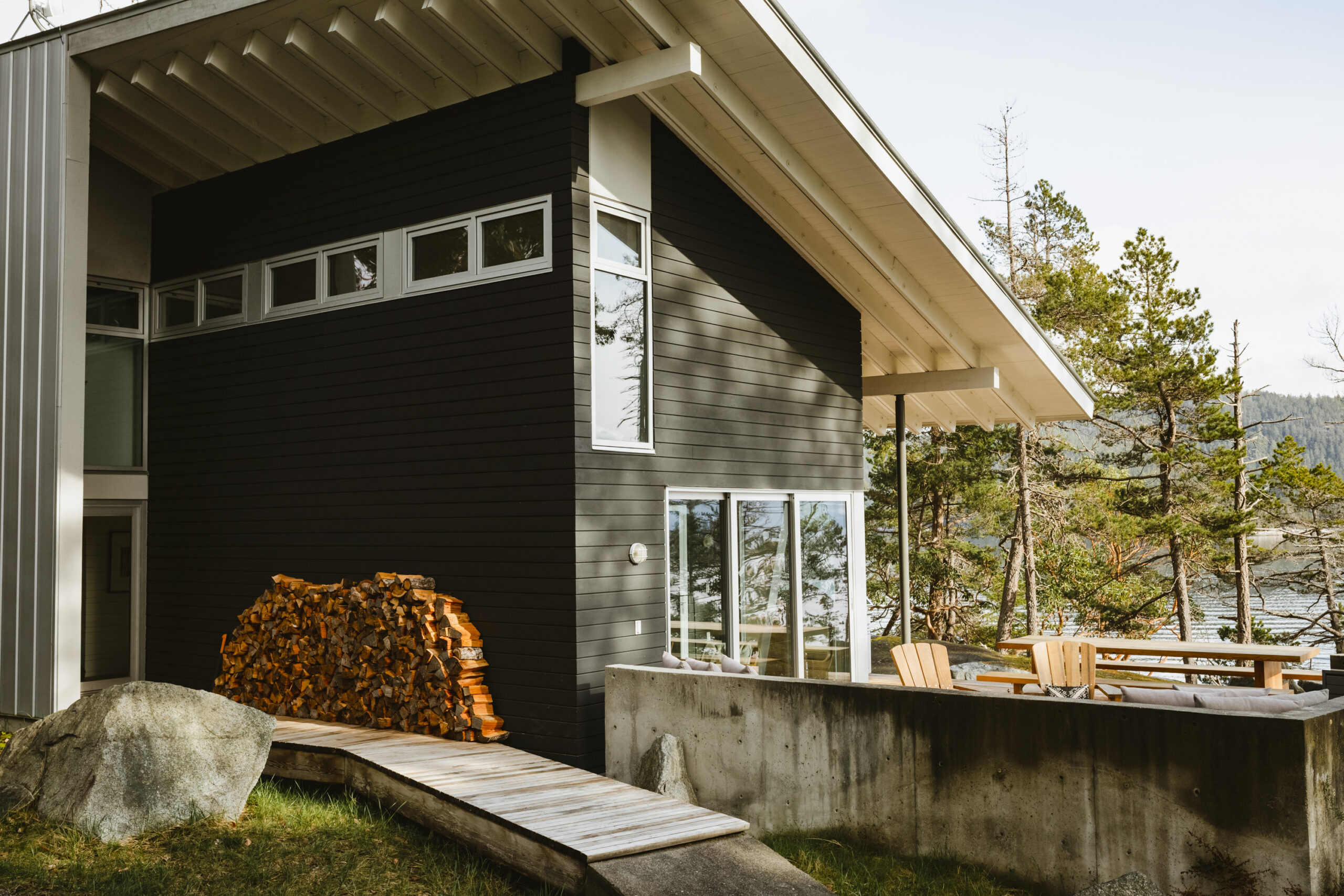
The main house, originally a BattersbyHowat design.





